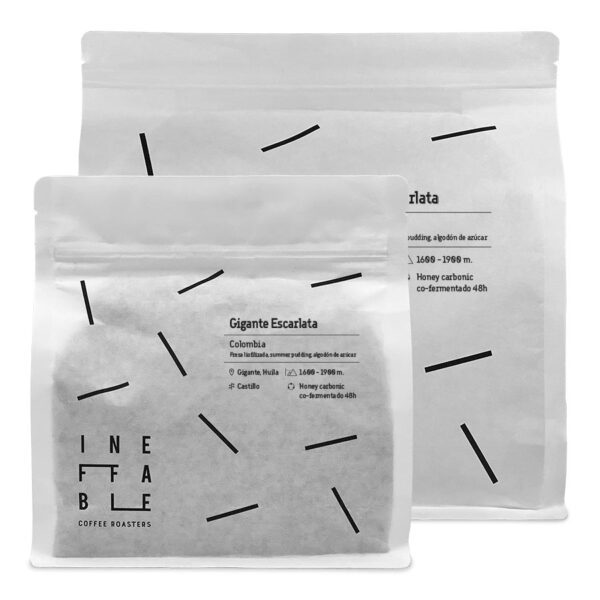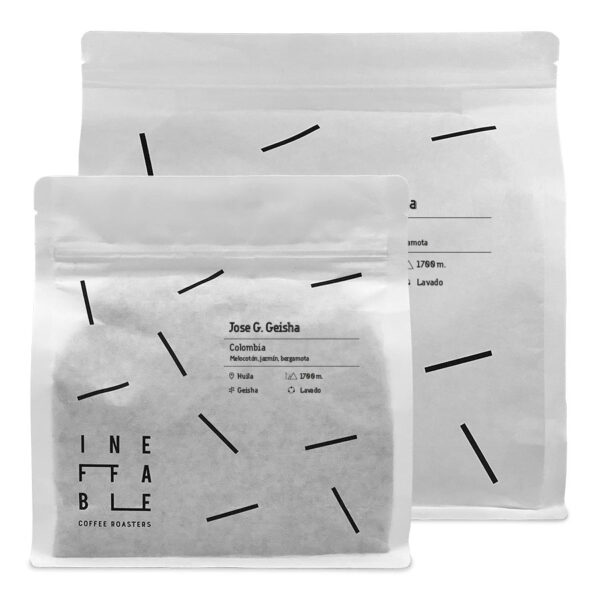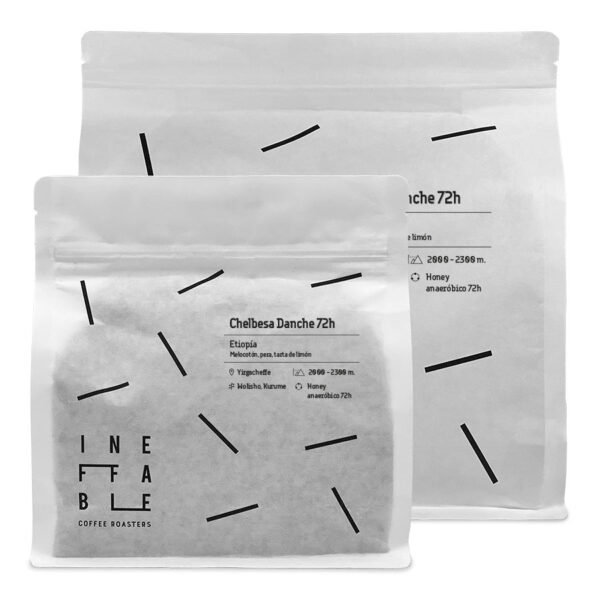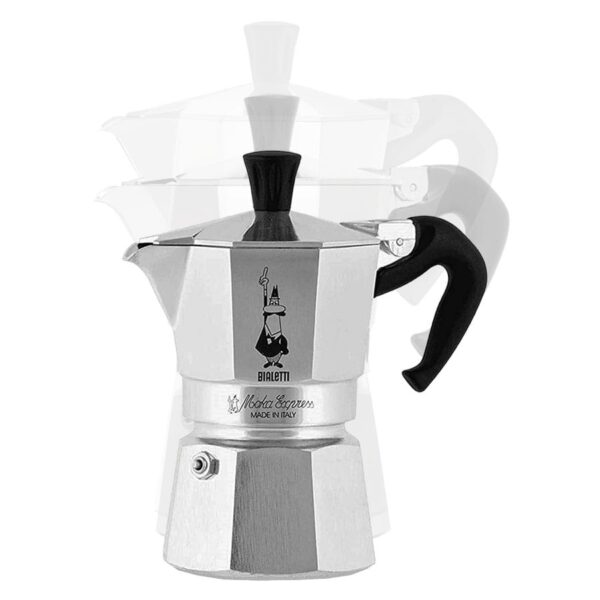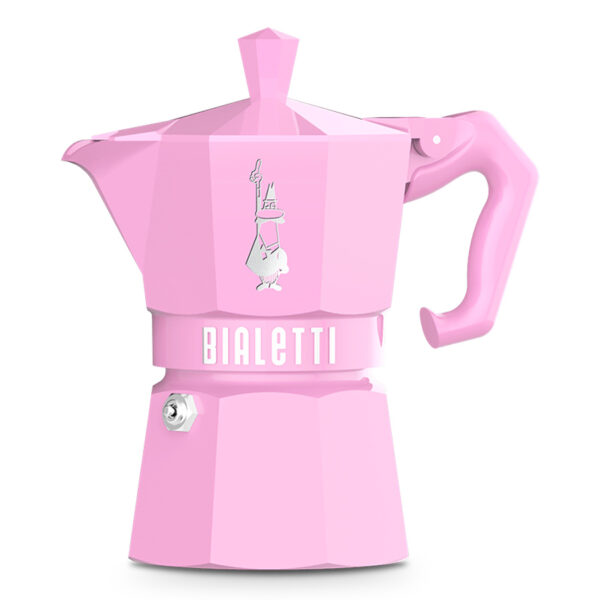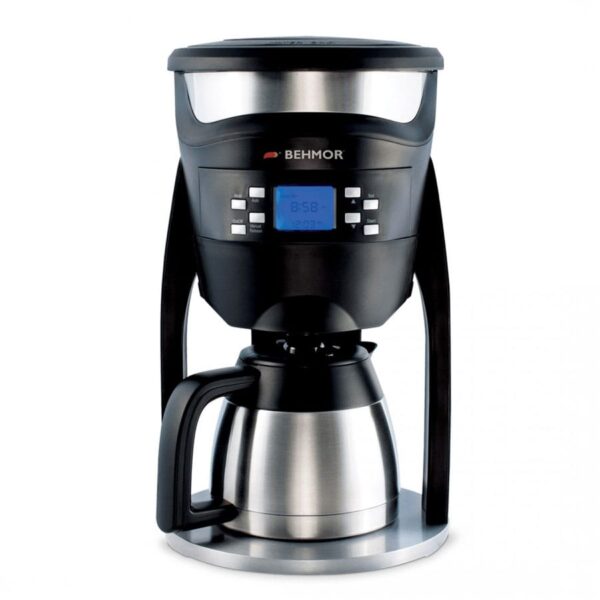“Give me a sun, I care not how hot, and sherbat, I care not how cool, and my Heaven is as easily made as your Persian’s.” Lord Byron wrote these words in 1813 praising the sherbat, a popular drink in the Middle East since the early Middle Ages.
In 1626, the philosopher Francis Bacon had already tasted it. Sherbat, which comes from the Arabic word for “drink” is considered the first soft drink or non-alcoholic soda.
It is, essentially, a drink made with syrups and spices. It also became popular in the West and was widely consumed until the advent of carbonated beverages.
That’s where the word “sorbet” comes from.What we propose is that you continue this tradition to create your own sherbat: a cold brew coffee that would make Lord Byron dedicate a couple of verses to it.
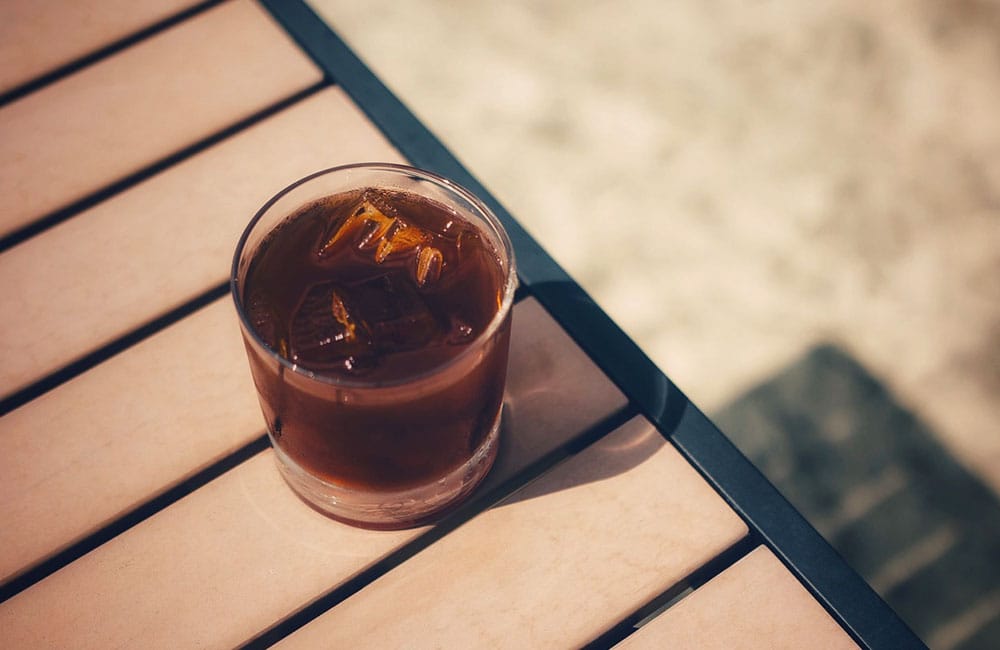
A cold brew coffee it’s a cold coffee extraction
Cold brew coffee is a cold coffee extraction. But it is not a hot coffee infusion that has been allowed to cool down, it is an infusion in which the extraction has been done with cold water.
And therein lies the difference. The cold extraction of coffee is carried out by immersing the coffee in water for a long period, which can last from 12 to 24 hours.
The cold extraction releases less acidic and bitter compounds from the coffee, thus producing a drink with sweeter notes. A study in the journal Nature shows that our perception of acidity and bitterness increases with hot or cold flavours.
How a Cold Extraction Affects Flavour
Acidity can be a good thing in coffee, it is one of the 5 basic tastes and it can help to highlight and create tasting notes.
Even a subtle hint of bitterness can be of benefit since, according to the Coffee Research Institute, it can offset too much acidity.
But if we do a hot coffee extraction and we let it cool down or we cool it down with ice, we run the risk that it becomes too acidic or bitter.
Elaborating a cold brew coffee, something that we can easily do at home, can prevent too acidic or bitter-tasting notes from emerging.
Cold brew coffee will highlight different tasting notes than a hot extraction.
The history of Cold Brew Coffee
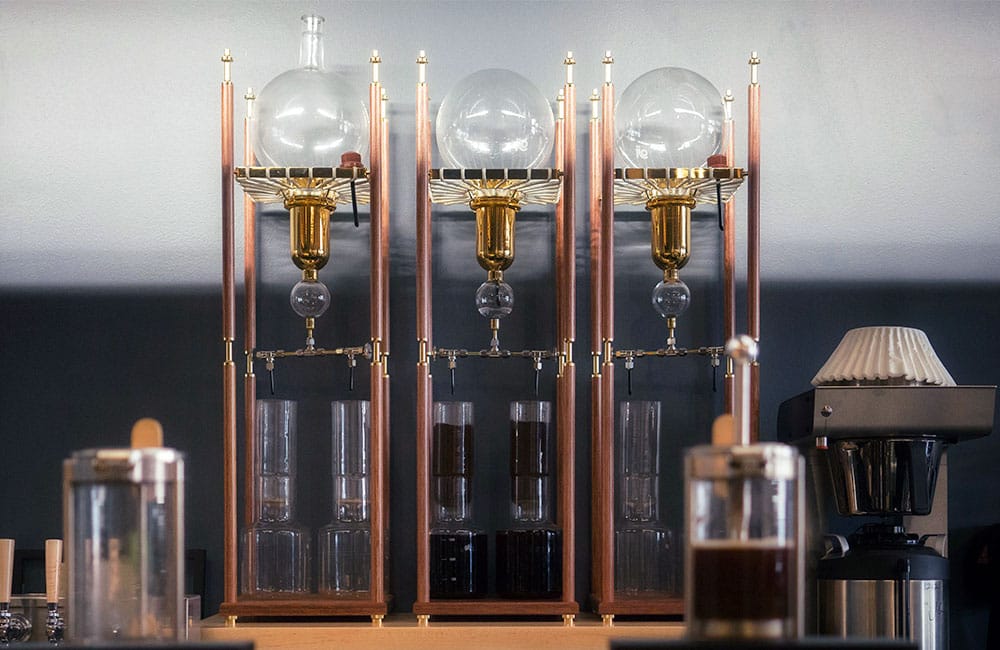
The Kyoto Coffee is cold and slow dripping coffee extraction
Sometimes when something becomes fashionable, as has happened with cold brew coffee in recent years, we run the risk of believing that it is something new. But something being trendy doesn’t necessarily mean it’s new, and the way you make cold brew coffee isn’t either. In Japan, cold brew coffee has been served since, at least, 1600.
It is known as “Kyoto Coffee” and it is said to have been introduced by Dutch merchants from Indonesia, who used it as a way to prepare coffee when they were travelling by sea.
The Japanese, with their zest to make an art of everything, soon began to create slow drip devices so that the extraction of coffee was not just delicious, but also a visual pleasure.
Cold Brew Coffee Comes to The West
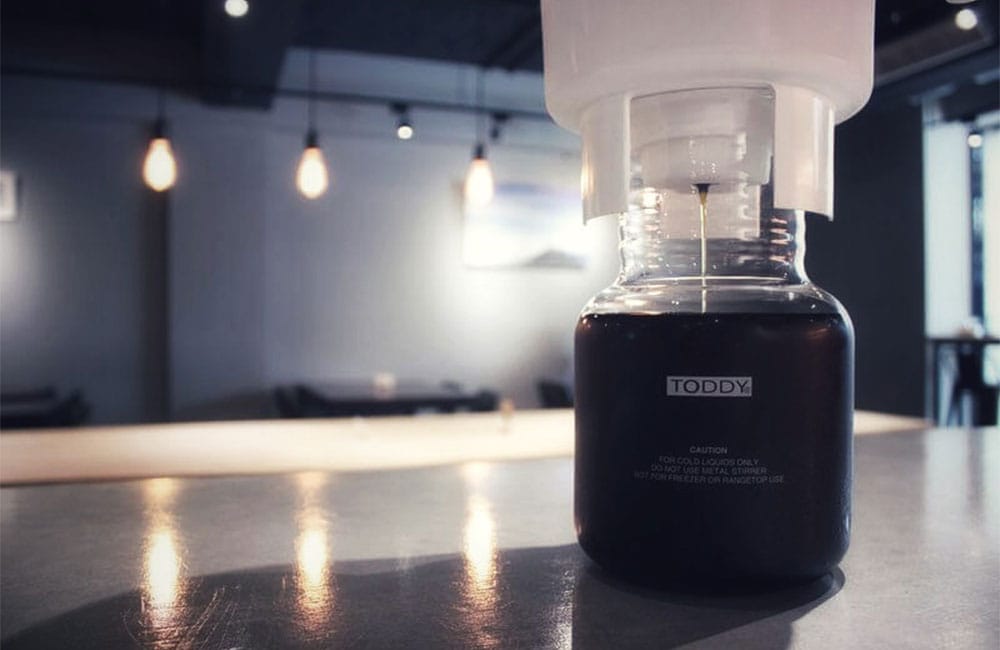
The Toddy is a easy method to make a cold brew
It is around 1800 when different coffee concentrates and syrups start to be produced and sold in the West. Due to their high concentration of caffeine (and sugar!), they became a common drink amongst soldiers; it is said that it was the French legionnaires in Algeria who started drinking it.
The first to sell cold brew coffee was the Japanese company Ueshima Coffee Co. followed by the Italian giant Illy. In the United States, cold brew coffee was popularized by a chemist, Todd Simpson, who created an easy method to prepare it (the “Toddy cold-brew coffee system”) during a trip to a plantation in Guatemala.
Today cold brew coffee can be found in many different forms and formats (and qualities!), both in the supermarket (although that is not what we would define as cold brew) and in your specialty coffee shop. The important thing is to be aware that fashion does not mean novelty, as it doesn’t mean quality either. For quality, we have to pay attention to how to make a cold brew correctly.
What Goes Into a Cold Brew Coffee?
The basic ingredients of a cold brew are coffee and water. As simple as that, and as delicious as it can be. The procedure is very simple: immerse the coffee completely in water for a long period and then filter it carefully before serving.
As with all our coffee brews, depending on the recipe that we follow, we will achieve different results. The final quality of our cold brew will depend, to a large extent, on the quality of the ingredients that we use in the recipe.
As always, we recommend using freshly ground specialty coffee and water with a dry residue between 125/175 mg per litre.
Cold Brew Coffee Recipe
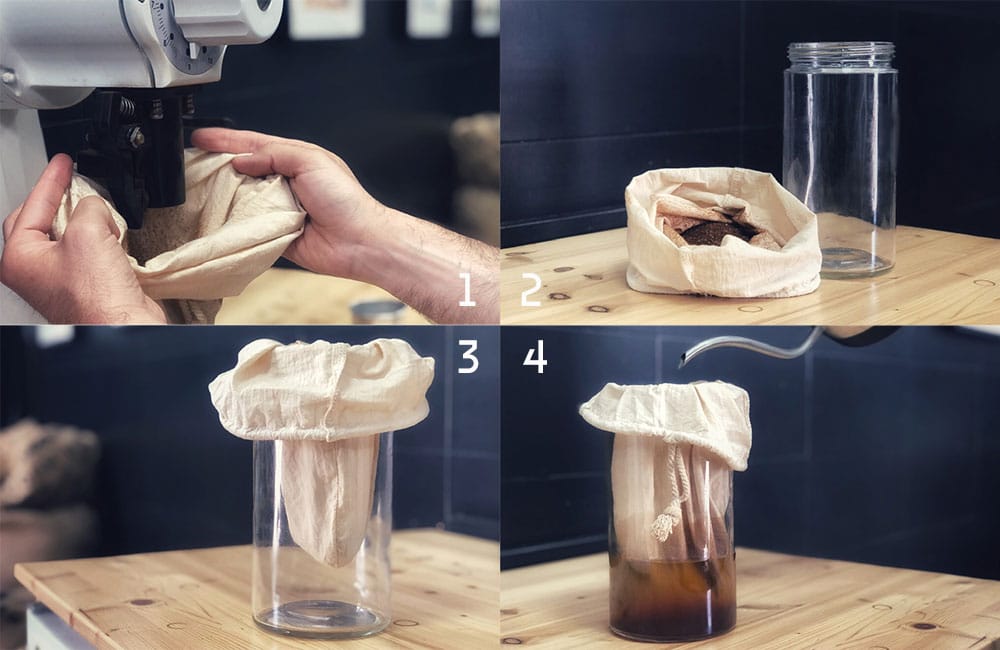
Steps to make a cold brew coffee at home
Esta es la receta de café cold brew que nosotros te proponemos para que elabores 600 ml de cold brew. El ratio, en caso de que quieras elaborar más o menos de esta cantidad, es de 1 g de café y 15 g/ml de agua. Necesitarás:
- Café 40 g
- Agua 600 g/ml
- Una malla o seda
- Un recipiente de cristal
Y la forma de hacer un café cold brew:
- Molemos el café con un molienda media
- Echamos el café directamente en la malla
- Introducimos la malla en recipiente de cristal
- Vertemos el agua en el recipiente a través de la malla con el café
- Removemos suavemente
- Tapamos el recipiente
- Lo dejamos reposar 15 horas en el frigorífico (¡atención a los olores fuertes!)
- Después de este tiempo de reposo, retiramos la malla con el café y estará listo.
How to Make a Cold Brew in a French Press?
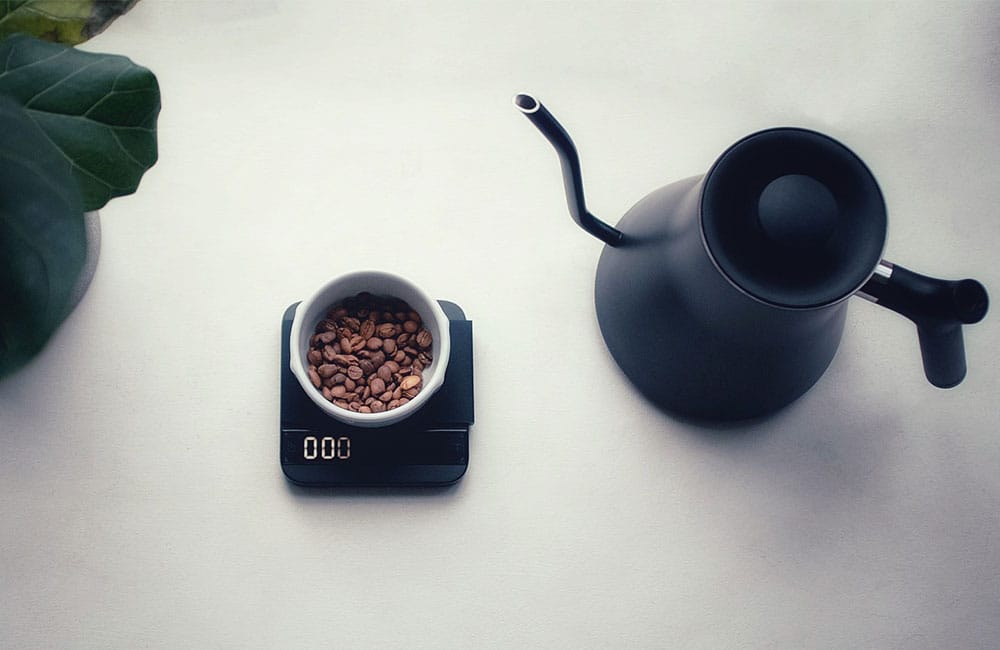
You can also make a cold brew coffee with a French Press
Además de la receta anterior, también puedes hacer un cold brew utilizando tu cafetera de prensa francesa o émbolo. Los ingredientes, el método y la ratio agua/café son los mismos, simplemente, en lugar de utilizar una malla utilizaríamos el filtro de la cafetera para separar los residuos sólidos del café.
Siguiendo las mismas cantidades que hemos descrito arriba el procedimiento sería:
- Verter el café molido en la cafetera
- Rellenar con la cantidad de agua adecuada
- Remover, tapar y dejar reposar en el frigorífico
- Una vez pasado el tiempo adecuado, empujar/filtrar los residuos de café al fondo de la cafetera y servir cuidadosamente (así la mayoría de los posos no pasarán a tu vaso)
Enjoy seasonal coffee, visit our shop
- Filter & EspressoCold BrewSpecial process
Gigante Escarlata – Colombia – Honey carbonic co-fermented 48h
25,00€ – 89,00€ VAT included - Filter
Jose G. Geisha – Colombia – Washed
25,00€ – 89,00€ VAT included - Filter & EspressoCold BrewSpecial process
Chelbesa Danche 72h – Ethiopia – Honey Anaerobic
20,00€ – 72,00€ VAT included
¿Does Cold Brew Coffee Have More Caffeine?
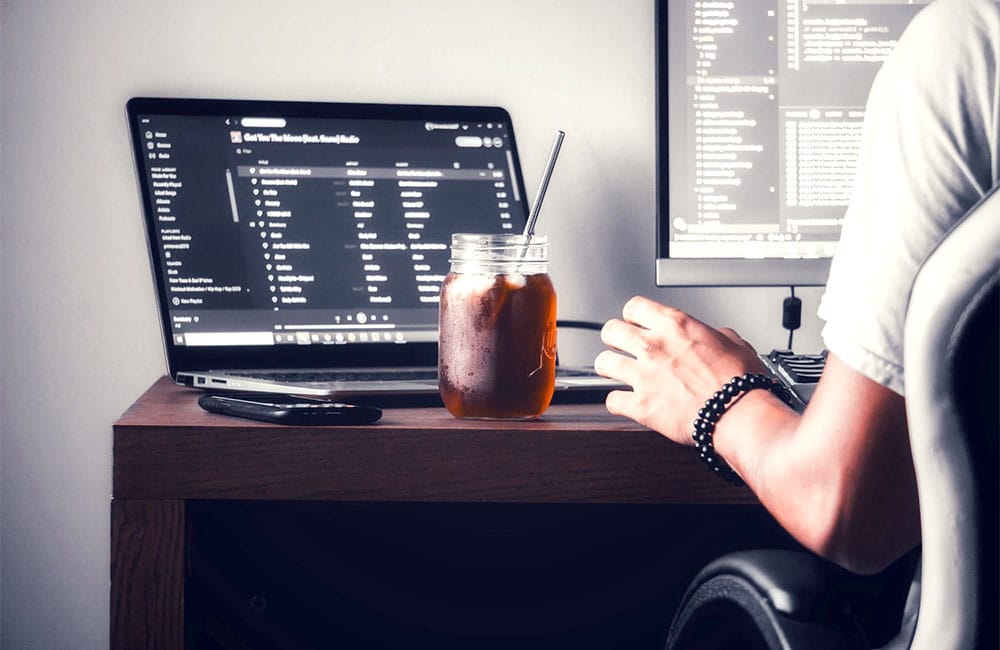
A cold brew coffee has more caffeine than a hot brew
There are more ways to prepare cold brew coffee, other than the ones we have suggested. The basic idea is that for a cold extraction a long infusion time is required and we need to take into account the coffee/water ratio.
We always have the possibility of buying the cold brew already made. Many specialty coffee shops sell it already packaged. But, as with any coffee brew, the time passed since we prepared it will influence its flavour due to the natural oxidation process it undergoes.
Given the ease of preparing a cold brew, we recommend that you try making it at home, which will also allow you to experiment with different coffees and recipes until you find the one you like the most.
Keep in mind that the longer the contact time between coffee and water, the greater the dissolution of solid compounds and, therefore, the higher the concentration of caffeine.
But this summer we hope you need all that caffeine and more.
So… enjoy it responsibly!


